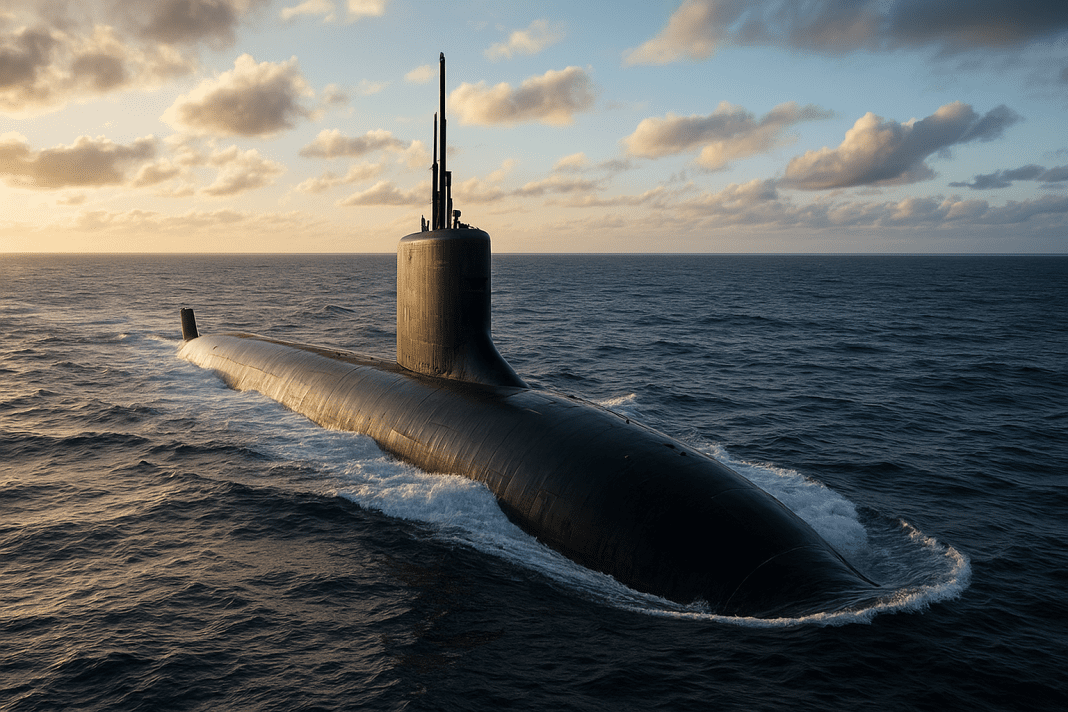The United States has officially allowed South Korea to develop and operate nuclear-powered submarines, a move that experts say marks a major turning point in East Asia’s military and Japan’s defense policy. The decision, announced by President Donald Trump on October 30, gives South Korea the green light to join an elite group of nations that possess such advanced underwater vessels.
A Historic Shift Under the Sea and Its Impact on Japan’s Defense Policy
This development goes beyond submarine technology. It reflects a wider change in regional security dynamics and directly affects Japan’s defense policy, which has long been guided by pacifist principles. Nuclear-powered submarines can stay underwater for months without surfacing and can travel faster and farther than diesel-powered ones. For Seoul, these submarines would provide a huge advantage in tracking North Korean and Chinese submarines that often operate near its waters.
During a meeting in the South Korean city of Gyeongju, President Lee Jae Myung told Mr. Trump that South Korea’s current diesel-powered submarines have limited abilities. Mr. Trump’s quick approval to assist in building a nuclear-powered submarine has since triggered intense debate in Japan, especially among those pushing for updates to Japan’s defense policy to match growing regional threats.
Sanae Takaichi’s leadership faces early test as China challenges Japan’s new direction
Japan’s Growing Debate and Public Divide
The US–South Korea submarine deal has reignited debate in Japan over whether Tokyo should also pursue nuclear-powered submarines. Prime Minister Sanae Takaichi has proposed a defense plan calling for “next-generation submarines with advanced propulsion,” echoing a Defense Ministry panel’s September recommendation — the first official support for exploring nuclear propulsion.
Experts see this as a possible turning point for Japan’s defense policy, which is under pressure amid worsening regional security. Defense Minister Shinjiro Koizumi said on national TV that Japan must reconsider its reliance on diesel submarines as all neighboring countries now have nuclear-powered ones.
The issue, however, remains highly sensitive. Japan’s defense policy has long reflected its post-war pacifism as the only country to suffer nuclear attacks. Since 1967, Japan’s three non-nuclear principles — never to produce, possess, or host nuclear weapons — have guided its security stance. Public opposition to using nuclear technology for defence remains strong.
Still, with South Korea modernizing its navy and China expanding its submarine fleet, Japan’s defense policy faces growing strain. Analysts argue Japan must find a balance between its commitment to peace and adapting to regional realities.
The topic has also split political circles. Conservatives see a stronger Japan defense policy as necessary for deterrence, while liberals fear it could weaken Japan’s pacifist image and provoke backlash. As the region’s tensions rise, Tokyo’s choices on nuclear propulsion could reshape its defense strategy and role in East Asia.
Regional Reactions and the Ripple Effect on Japan’s Defense Policy
South Korea’s decision to build nuclear-powered submarines has sparked strong reactions from North Korea, China, and Russia, all viewing it as a threat to their military dominance. Experts warn this could fuel an arms race and force countries like Japan to reconsider their defense policy.
North Korea’s Defense Minister No Kwang Chol accused the US of “intentionally escalating tensions” and soon after, Pyongyang fired a ballistic missile. Leader Kim Jong Un was also seen inspecting a “nuclear-powered strategic submarine” under construction. Reports suggest Russia supplied submarine parts to North Korea in exchange for artillery and manpower to support its war in Ukraine, deepening regional instability and pushing Japan to reassess its defense policy.
China’s reaction was swift. Beijing sanctioned five subsidiaries of Hanwha Ocean, the South Korean shipbuilder tied to the deal, accusing them of aiding US maritime strategies. These moves could pressure Japan to revise its defense policy to keep pace with shifting power dynamics.
LDP elects Sanae Takaichi as first female leader in Japan marking major shift in party history
Economically, the agreement links to South Korea’s US$350 billion investment plan under its tariff deal with the US, with US$150 billion aimed at boosting America’s shipbuilding sector. The first submarine will be built at the Hanwha Philly Shipyard in Pennsylvania, though Seoul hopes to produce future vessels domestically.
Experts say the deal benefits both Washington and Seoul, but also heightens nuclear risks. Analysts warn that South Korea’s growing capabilities could reshape Japan’s defense policy and accelerate competition in East Asia’s strategic waters.

